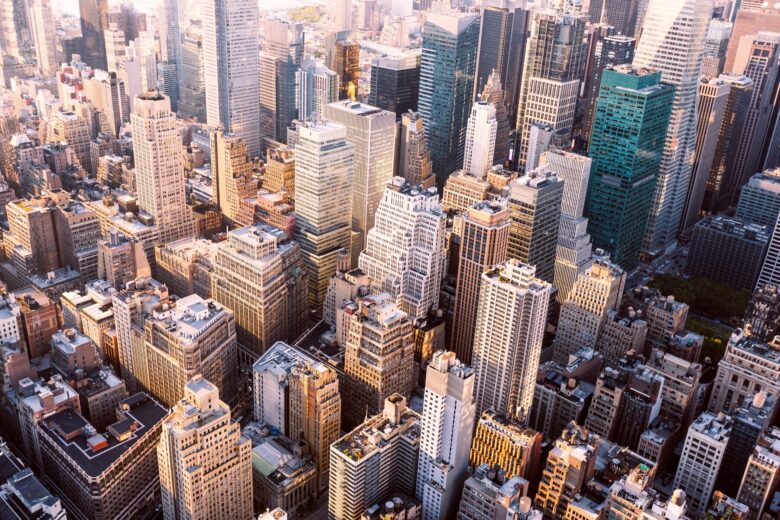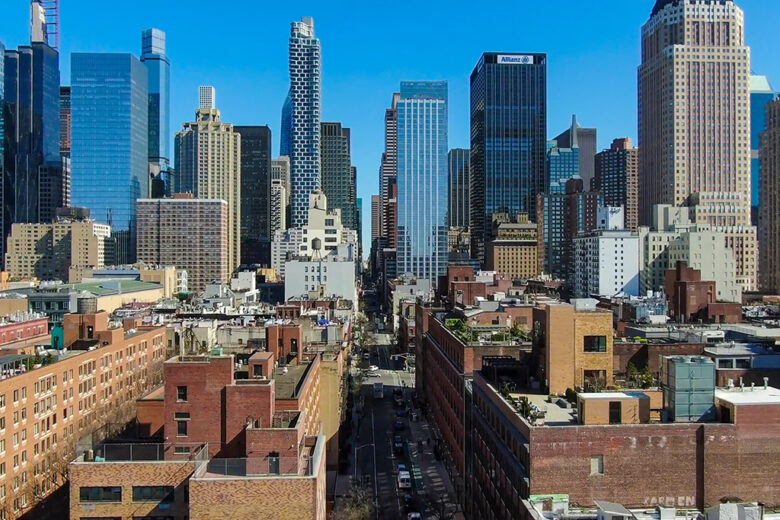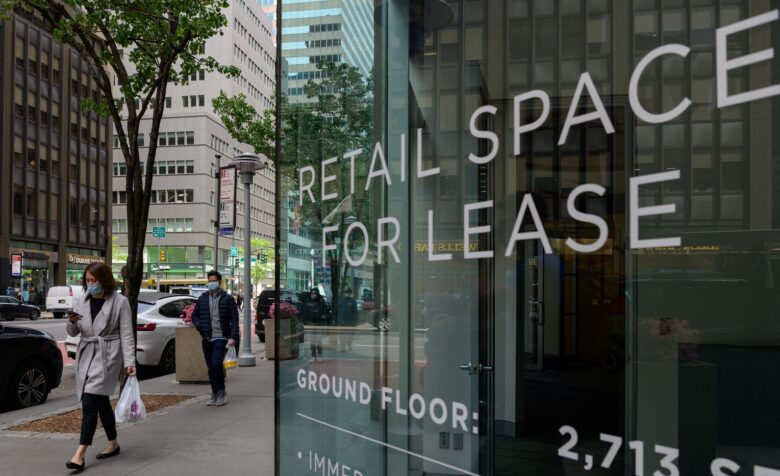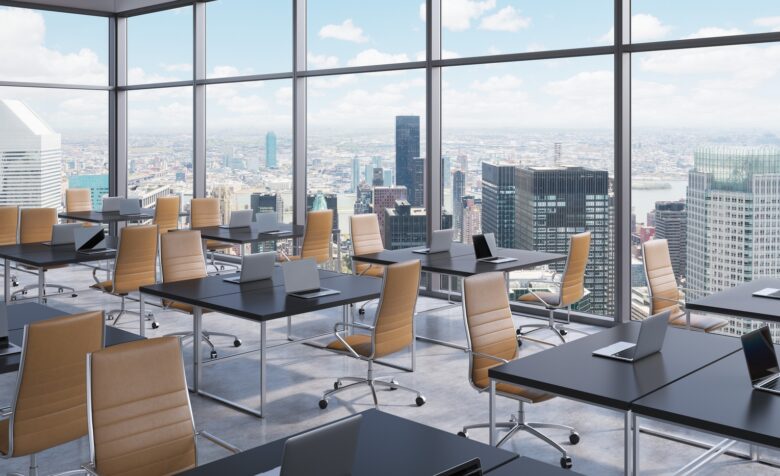New York City is more than a legendary (and legendarily congested) city. It’s home to some of the most expensive real estate in the nation. For this and other reasons, investors and brokers alike are closely following Manhattan commercial real estate in New York.
One of New York City’s five boroughs, Manhattan is the smallest, yet most heavily populated. Its Financial District is home to Wall Street, the New York Stock Exchange and Nasdaq.
While Manhattan’s commercial real estate (CRE) properties are often protected from negative trends by its popularity, rising rates have taken their toll. During the first quarter of 2024, commercial sales declined 16% from the previous quarter and saw a 52% year-over-year slide.

Source: costar.com
Contents
Investor Takes on Manhattan Commercial Real Estate
Major investors have already shared their views of New York’s 2024 CRE market, describing it as “uncharted territory” that may still see a recession because of sticky inflation, higher interest rates, and the ongoing Ukraine conflict.
One New York investment is held by Blackstone Inc., the world’s largest alternative investment firm. Currently, Blackstone is in danger of defaulting on a $270 million loan backed by 11 Manhattan apartment buildings.
Even as Manhattan rents rose year-over-year by 43.5%, income from the 11 buildings didn’t cover Blackstone’s maintenance costs. This has landed their CRE loan into special servicing.
If a firm like Blackstone can run into trouble with CRE investments in Manhattan, what can other investors expect? It’s time to look at commercial real estate (CRE) in Manhattan to see what’s happening and what to expect.
Manhattan’s Industrial Real Estate, (AKA, the Parking Unicorn)
Compared to the other boroughs of New York City, Manhattan’s industrial holdings are generally small and scarce, except for parking. No matter what’s going on in New York, visitors need to park.
Investing in Manhattan parking properties, whether it’s a 10-space lot or a multi-story building, is probably one of the lowest-risk picks. However, these are some of the scarcest and most expensive.
A garage and vehicle storage facility adjoining the United Nations building was described as a “unicorn” in its sales flyer. Two purchase options are offered: a 75-space parking garage with commercial occupancy, or a 29-space facility with garage occupancy. Pricing is politely described as “unpriced”.
Another example of Manhattan parking: a four-floor, 200-space garage in the Financial District. Price: $13.5 million.
Other types of industrial CRE are fairly rare within Manhattan. As of early May 2024, only five warehouse buildings were listed for sale.
Another type of commercial real estate, multifamily, offers more variety and options for investors. But higher interest rates are causing both would-be buyers to balk.

Source: metro-manhattan.com
“The Rent’s Too Damn High,” But We’re Paying It Anyway
While Manhattan’s most expensive listing (a seven-bedroom, $250 million penthouse) is still available after over 200 days in the MLS, other residential real estate is still selling, although not nearly at the same pace as seen between 2021 and 2022.
Would-be condo and co-op buyers are moving into Manhattan rental properties or renewing their leases, deterred from buying by higher interest rates. Lenders don’t like the rates either, and many are nervously tightening their qualifying requirements.
This has caused Manhattan’s multifamily CRE market to dive over 75% in its four-quarter average for sales volume.
During the first quarter of 2024, only 22 transactions were closed, with the total value $430 million. However, there were two notable multifamily sales:
- The sale of 408 East 92nd Street for $115 million to Stonehenge NYC. The 196-unit building is rumored to be nearing the end of a rent stabilization agreement.
- The sale of the 162-luxury apartment asset of Mercedes House at 550 West 54th Street for $100 million. Rental prices for a studio apartment currently run $3700 to $3900.
No other apartment building transactions during the quarter were over $32 million.
The outlook for the rest of 2024? Investors nervous about Blackstone’s dilemma are adopting a “wait and see” approach.
However, consumers have taken the opposite approach when it comes to shopping for designer goods…and Manhattan is the nation’s favorite destination.

Source: nydailynews.com
Retail Rules Manhattan
Unlike many other big cities, and even other New York City boroughs, much of Manhattan’s retail CRE has a major advantage: luxury. Couture devotees willing to drop $42,000 for a Gucci crocodile bag head to Manhattan.
Designer labels like Givenchy and Gucci acquired new retail space in 2022, helping push prices higher. Many retail brokers expect 2024 to see more high-end retailers expand their Manhattan presence. One recently remarked that “luxury as a category is on fire”.
During the first quarter of the year, asking rent in 16 retail corridors grew to $638 PSF, up by over 3.6% from Q4 2022.
Louis Vuitton, part of the Moët Hennessy Louis Vuitton (LVMH) Group, leased space at 660 Madison Avenue. The world’s leading luxury goods producer, the LVMH Group raked in 21 billion euros (just under 23 billion US dollars) during the first quarter of 2024, a year-over-year increase of 17%.
Elsewhere, pricing spreads for Manhattan’s retail CRE were all about location. During 2022, prices for certain areas, even limited to one street, varied widely.
- Broadway’s stretch from Chambers Street to Battery Park saw price spreads from $135 to $600 PSF.
- The Herald Square area between 5th and 7th Avenues saw ranges from $170 to around $1k on West 34th Street alone.
- Fifth Avenue retail spaces rent from $2,250 to $3,000 per square foot.
Vacant ground floor spaces dropped 7.2% from the previous quarter to 206 spaces, which adds up to a 16.6% reduction YOY. It was also the seventh consecutive quarter in which ground floor availability decreased.
While Manhattan’s retail CRE has a distinct advantage over other cities, office space is suffering the same fate as everyone else…with one exception.

Source: spradlingvinyl.com
No Commute, No Sale
Due to a lasting trend to remote work and the savings it offers workers and employers aike, around 20% of Manhattan’s office space is either vacant or occupied by someone who wants to sell.
Sales during Q1 2024 fell over 50% from the previous quarter. In addition, fears of a recession or worse are causing companies to hesitate when faced with upcoming lease renewals.
In addition, some owners have a crisis headed their way. More than $16 billion in loans for office properties will be due soon, and some may end up in default.
The only bright spot in Manhattan’s office sector? Class A luxury buildings are busy leasing in 2024. Owners collect luxury-price rents, with some leasing at over $100 PSF.
More Class A office buildings are in the works, including the 100-story 175 Park Lane building on the site of the former Trump Hyatt.
